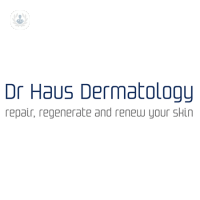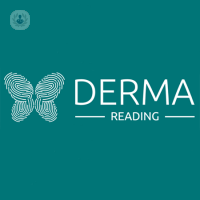What is photodynamic therapy?
Photodynamic therapy is a method indicated for the treatment of certain skin lesions. It is a minimally invasive technique based on the application of light to the skin, above a photosensitive cream, in order to attack affected cells only, without affecting healthy cells.

The advantage of this technique is its ability to improve the patient’s quality of life, given that its minimally invasive nature avoids surgery and a hospital stay. Moreover, no complications or side effects have been reported.
Why is it done?
Photodynamic therapy is indicated for the treatment of several skin conditions, such as the following (non-exhaustive list):
- Rosacea and certain types of acne
- Some types of skin cancer, such as basal cell or squamous carcinoma.
- Fine wrinkles and aged skin
- Sun damage such as liver spots
- Scars.
Hence, in addition to repairing skin lesions, this treatment also increases the oxygenation, luminosity and smoothness of the skin, eliminating toxins.
What does it involve?
First, a photosensitising cream is applied to the area of the skin to treat. Then the area is irradiated with a dose of red light. This technique provokes a photochemical reaction that destroys atypical or impaired cells, without damaging healthy cells.
The patient may remain with their head covered and the photosensitising cream applied for up to 3 hours, to ensure absorption. Next, the light exposure step usually takes around 10 minutes, varying by patient. After the session, the patient can immediately resume their normal routine.
The dermatologist may recommend the application of photoprotective creams for at least 48 hours after the treatment.
Preparation
You will have to obtain the cream at a pharmacy, then store it between 2-8ºC, e.g. in a fridge. Other than remembering to bring the cream to the session, there is no other preparation required.
Nevertheless, you will have to tell the dermatologist about your health and medications, given that photodynamic therapy is contraindicated in pregnant women and patients with lupus or porphyria.
Alternatives to photodynamic therapy
There are other options available, depending on the condition being treated.
For example, in the case of sun lesions, laser and surgery may be used to eliminate them. In the case of wrinkles and expression lines, there are several techniques that may be used, such as a lift procedure or implantation of substances such as hyaluronic acid or botulinum toxin. Finally, in the case of lesions believed to cause skin cancer, the usual treatment is radiotherapy and chemotherapy.
11-13-2012 08-21-2023Photodynamic therapy
Dr Anne Farrell - Dermatology
Created on: 11-13-2012
Updated on: 08-21-2023
Edited by: Aoife Maguire
What is photodynamic therapy?
Photodynamic therapy is a method indicated for the treatment of certain skin lesions. It is a minimally invasive technique based on the application of light to the skin, above a photosensitive cream, in order to attack affected cells only, without affecting healthy cells.

The advantage of this technique is its ability to improve the patient’s quality of life, given that its minimally invasive nature avoids surgery and a hospital stay. Moreover, no complications or side effects have been reported.
Why is it done?
Photodynamic therapy is indicated for the treatment of several skin conditions, such as the following (non-exhaustive list):
- Rosacea and certain types of acne
- Some types of skin cancer, such as basal cell or squamous carcinoma.
- Fine wrinkles and aged skin
- Sun damage such as liver spots
- Scars.
Hence, in addition to repairing skin lesions, this treatment also increases the oxygenation, luminosity and smoothness of the skin, eliminating toxins.
What does it involve?
First, a photosensitising cream is applied to the area of the skin to treat. Then the area is irradiated with a dose of red light. This technique provokes a photochemical reaction that destroys atypical or impaired cells, without damaging healthy cells.
The patient may remain with their head covered and the photosensitising cream applied for up to 3 hours, to ensure absorption. Next, the light exposure step usually takes around 10 minutes, varying by patient. After the session, the patient can immediately resume their normal routine.
The dermatologist may recommend the application of photoprotective creams for at least 48 hours after the treatment.
Preparation
You will have to obtain the cream at a pharmacy, then store it between 2-8ºC, e.g. in a fridge. Other than remembering to bring the cream to the session, there is no other preparation required.
Nevertheless, you will have to tell the dermatologist about your health and medications, given that photodynamic therapy is contraindicated in pregnant women and patients with lupus or porphyria.
Alternatives to photodynamic therapy
There are other options available, depending on the condition being treated.
For example, in the case of sun lesions, laser and surgery may be used to eliminate them. In the case of wrinkles and expression lines, there are several techniques that may be used, such as a lift procedure or implantation of substances such as hyaluronic acid or botulinum toxin. Finally, in the case of lesions believed to cause skin cancer, the usual treatment is radiotherapy and chemotherapy.
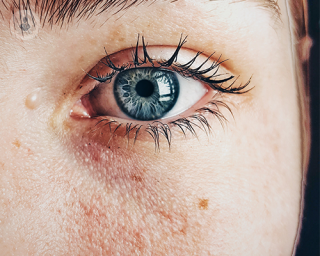

Basal cell carcinoma: the most common skin cancer
By Dr Raj Mallipeddi
2024-12-14
Of all the types of skin cancer, basal cell carcinoma (BCC) is the most common. Learn how basal cell carcinoma manifests, what causes it and how it’s treated from Dr Raj Mallipeddi, a consultant dermatologist and specialist in skin cancer. See more
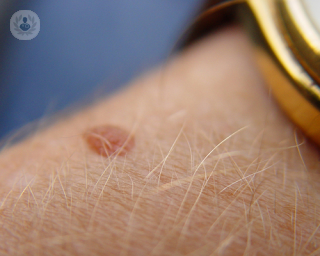

Skin deep: An expert’s guide to the world’s most common cancer
By Dr Raj Mallipeddi
2024-12-11
Skin cancer is a common danger – in fact, it is the most common form of cancer in the world. The idea that an innocent-looking mole on the skin could be deadly is a worrying prospect and the fact that simply being in the sun for too long can cause it is perhaps more worrying still. People often want to know how to spot skin cancer early and if it can be cured. Dr Raj Mallipeddi, London-based consultant dermatological surgeon, is here with the answers. See more
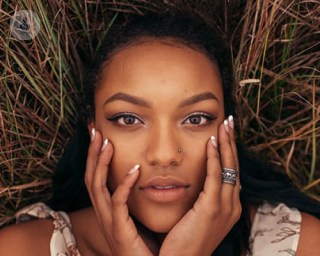

Skin cancer: What to expect from photodynamic therapy
By Dr Raj Mallipeddi
2024-11-19
If you have been told that photodynamic therapy is the recommended procedure for your skin cancer case, you might be wondering what happens exactly during treatment and whether it is a painful experience. Here, one of London's top dermatologists, Dr Raj Mallipeddi, explains all. See more
Experts in Photodynamic therapy
-
Dr Raj Mallipeddi
DermatologyExpert in:
- Cosmetic dermatology
- Surgical dermatology
- Skin cancer
- Mohs surgery
- Laser
- Photodynamic therapy
-
Dr Hélène Menagé
DermatologyExpert in:
- Skin allergies
- Acne
- Photodynamic therapy
- Sun allergy
- Skin cancer
- Eczema
-
Dr Wanda Robles
DermatologyExpert in:
- Laser
- Skin cancer
- Psoriasis
- Skin allergies
- Acne
- Photodynamic therapy
-
Dr Anne Farrell
DermatologyExpert in:
- Acne
- Moles
- Laser
- Paediatric dermatology
- Hair loss
- Photodynamic therapy
-
Dr Sanju Arianayagam
DermatologyExpert in:
- Eczema
- Photodynamic therapy
- Rosacea
- Vitiligo
- Hair loss
- Warts
- See all

Dr Haus Dermatology
Dr Haus Dermatology
75 Harley Street, Marylebone
No existe teléfono en el centro.
By using the telephone number provided by TOP DOCTORS, you automatically agree to let us use your phone number for statistical and commercial purposes. For further information, read our Privacy Policy
Top Doctors

Guy’s and St Thomas’ Private Healthcare
Guy’s and St Thomas’ Private Healthcare
Guy’s Hospital, Great Maze Pond
No existe teléfono en el centro.
By using the telephone number provided by TOP DOCTORS, you automatically agree to let us use your phone number for statistical and commercial purposes. For further information, read our Privacy Policy
Top Doctors

Derma Reading
Derma Reading
Shepherds Hill, Woodley, RG6 1FE
No existe teléfono en el centro.
By using the telephone number provided by TOP DOCTORS, you automatically agree to let us use your phone number for statistical and commercial purposes. For further information, read our Privacy Policy
Top Doctors
-
Dr Haus Dermatology
75 Harley Street, Marylebone, W1G Marylebone LondonExpert in:
- Acne
- Dermatitis
- Nail infections
- Skin lesions
- Moles
- Rosacea
-
Guy’s and St Thomas’ Private Healthcare
Guy’s Hospital, Great Maze Pond, SE1 South Bank LondonExpert in:
- Allergy
- Cardiology
- General Surgery
- Maxillofacial Surgery
- Thoracic Surgery
- Maternity care
-
Derma Reading
Shepherds Hill, Woodley, RG6 1FE, ReadingExpert in:
- Acne
- Skin Cancer
- Paediatric Dermatology
- Moles
- Aesthetic Medicine
- Hair loss
- See all
- Most viewed diseases, medical tests, and treatments
- Visual impairment
- Diabetic retinopathy
- Retina
- Presbyopia
- Nystagmus
- Myopia
- Hyperopia (farsightedness)
- Eye examination
- Blepharitis
- Astigmatism




